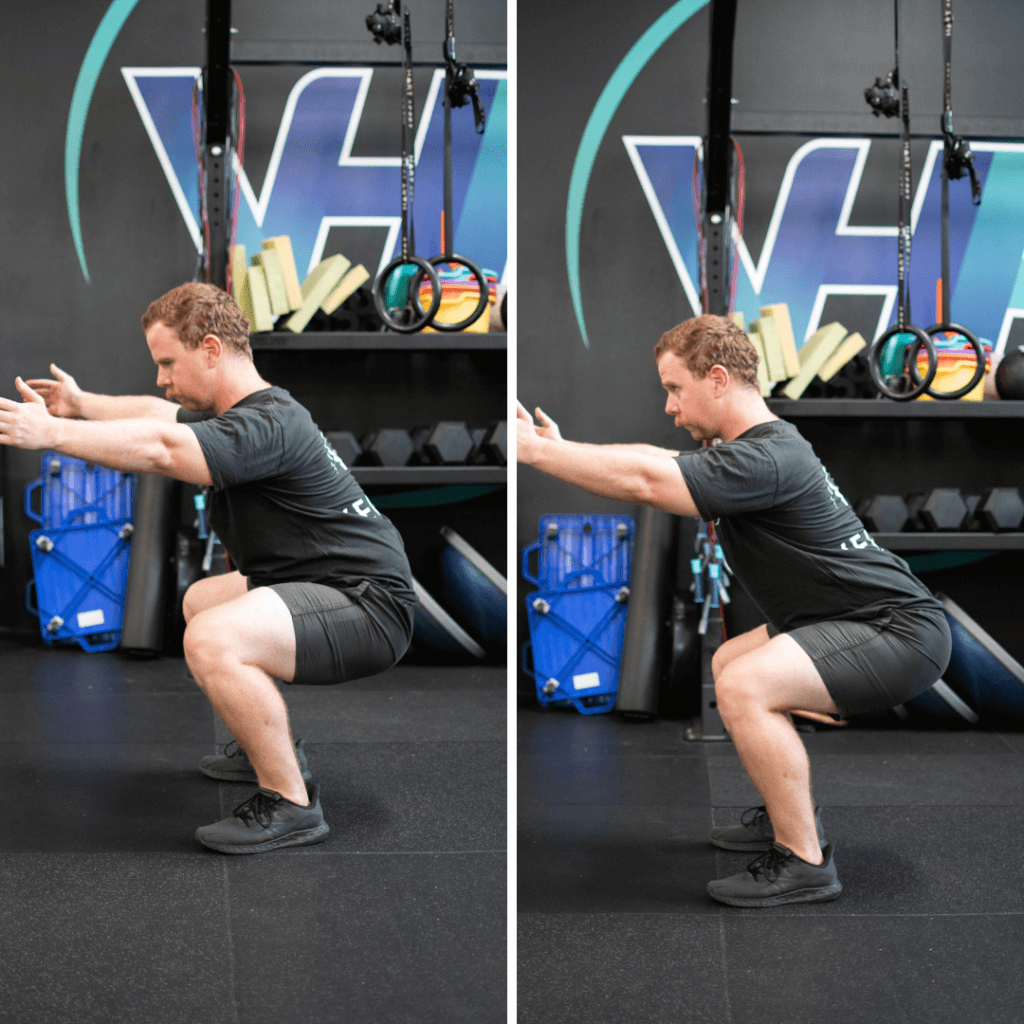Why Does My Groin Hurt When I Squat?
Groin or adductor pain is reasonably common as a complaint for people when they are squatting. From a coaching or health professional viewpoint, we hear this as a complaint fairly commonly. Research, however on this particular topic can be somewhat difficult to find. There are many factors that can contribute to groin pain in a squat action so this article aims to identify possible causes and some actions you could take to try to eliminate groin pain in a squat action.
Firstly, where is the groin or adductor??
In this picture to the left you can see an anatomy picture of the adductor muscle. Reaching from the front of the groin to the back of the thigh and knee.
And… how do you test for an adductor injury?
This video goes over just one way we can test, there are plenty of different ways that we can test though.
Here are some causes of Groin Pain during Squats
Adductor Muscle Strain One of the most common causes of groin pain during squats is an adductor muscle strain. The adductor muscles, located on the inner thigh, play a crucial role in stabilizing the hip and knee during movements like squats (Serner et al., 2015). Strains can occur due to overuse, improper technique, or sudden increases in training intensity.
Hip Flexor Tightness Tight hip flexors can lead to compensatory movements during squats, placing undue stress on the groin area. The iliopsoas muscle can become shortened from prolonged sitting or insufficient stretching, leading to pain during hip flexion movements like squatting (Neuman, 2010).
Femoroacetabular Impingement (FAI) FAI is a condition where abnormal bone growth around the hip joint causes friction during movement, leading to pain and restricted range of motion. This impingement can affect the groin area, especially during deep hip flexion activities such as squatting (Ganz et al., 2003).
Labral Tear The hip labrum is a ring of cartilage that surrounds the hip socket, providing stability and cushioning. Tears in this cartilage can result from acute injury or repetitive stress, leading to groin pain during activities that involve hip rotation and flexion (Tibor & Sekiya, 2008).
Hernia An inguinal hernia occurs when tissue, such as part of the intestine, protrudes through a weak spot in the abdominal muscles. This can cause significant groin pain, especially during exertional activities like squatting (Zendejas et al., 2011).

Practical Recommendations to Alleviate Groin Pain
Correct Your Squat Technique
Proper squat technique is essential to avoid undue stress on the groin and other parts of the body. Ensure your feet are positioned shoulder-width apart or slightly wider, with toes pointed slightly outward. Maintain an upright torso and engage your core throughout the movement. Descend slowly and avoid bouncing at the bottom of the squat. Using a mirror or working with a coach can help identify and correct any form issues (Escamilla, 2001).
Regular Mobility and Flexibility Exercises
Improving hip mobility and flexibility can help reduce or eliminate groin pain. Incorporate dynamic stretches and mobility drills into your warm-up routine, such as leg swings, hip circles, and lunges. Additionally, regular static stretching of the hip flexors, adductors, and hamstrings can improve range of motion and reduce tightness. Foam rolling and myofascial release techniques can also be beneficial in addressing muscle tightness and trigger points (Starr, 2010).
Muscle strengthening – the little muscles matter!
Focus on exercises that target the glutes, hamstrings, and core. Glute bridges, clamshells, and planks are effective exercises to include in your routine. Additionally, adductor strengthening exercises, such as side-lying leg lifts and resistance band exercises, can help balance muscle strength and prevent strain (Reiman et al., 2012).
